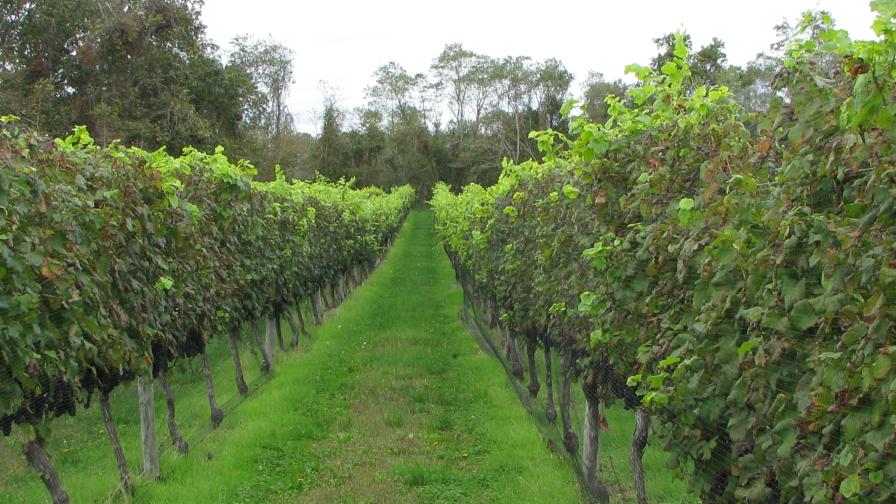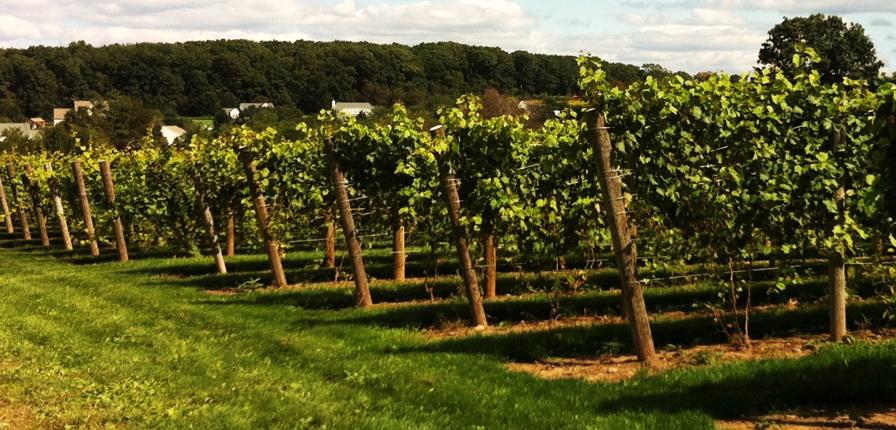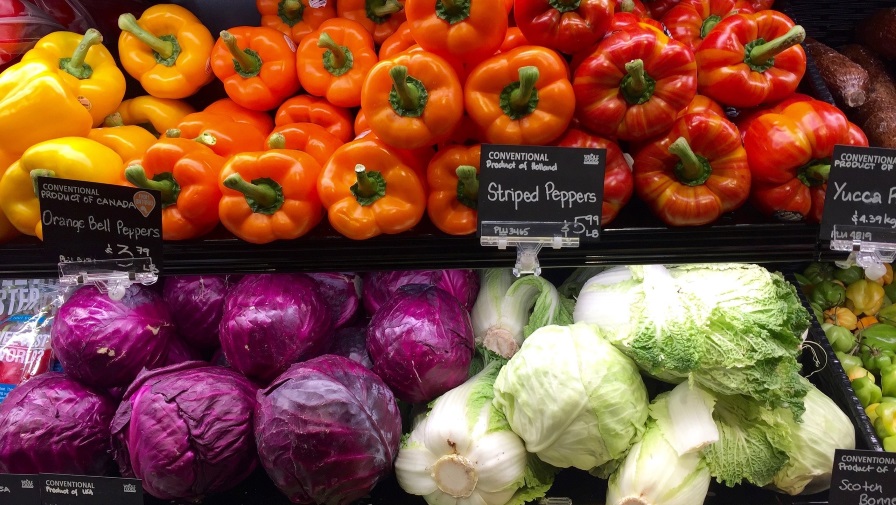Grape Grower Lessons Learned the Hard Way

There is much to be learned before embarking into the grape and wine business, according to Rutgers University Professor Gary Pavlis. Luckily, there are countless resources to tap into. But do your homework, he stresses.
Photo by Gary Pavlis
If the 65 to 70 wineries currently in New Jersey, Gary Pavlis figures most of them got their start inside his Rutgers University office. In the process, the Garden State has escaped from the dark ages of winemaking.
“We had this law in New Jersey that was left over from Prohibition that said you could only have one winery per million people,” Pavlis says. “We had 7 million people, so we’re only going to have seven wineries. Prohibition was basically our attempt in this country to show how stupid we are.”
That all changed in 1981 with the passage of the New Jersey Farm Winery Act. The legislation relaxed Prohibition-era restrictions while providing new opportunities for winery licenses.
Pavlis, who had arrived at Rutgers in 1984, decided to take his tenure as an Associate Professor and run with the idea of boosting the New Jersey grape and wine industry.
“Originally my work was with blueberries. My office is in the middle of 8,000 acres of blueberry, but my passion has always been wine,” he says. “And it seemed like every professor I had, always with a Ph.D., etc., was a wine nut.”
Today Pavlis spreads his passion across the country, including Grand Rapids, MI, where he provided attendees of the Great Lakes Expo with advice on how to start a winery. He quickly noted that some of the earliest and best guidance he ever received came from Stan Howell, a viticulturist from Michigan.
“He, in my mind, was the father of the wine industry in this state,” Pavlis says.
Howell, who died in 2018 at the age of 77, set Pavlis straight from the get-go, telling him that far too many wine-making newcomers are wannabes.
“He basically said that a lot of these people are pie-in-the-sky people. They drink expensive ‘Bordeaux’, and they say, ‘OK, I’m gonna do this.’ They come to you, and they’re going to plant grapes in two weeks. But they have done no research, no work whatsoever.”
In turn, the best thing Pavlis could do from a Rutgers standpoint, according to Howell, was to “really lay it out” as to what it takes to start a winery. What are the pitfalls? What is the process for this?
And that is what Pavlis has done and continues to do.
PRE-PLANTING PRIORITIES
Pavlis lists at least 10 questions that prospective vineyard owners need to ask themselves before planting. For instance, what are your objectives?
“If you’re going to just plant grapes and sell the grapes to somebody, then the makeup of those varieties is going to be much different than if you’re going to have a winery,” Pavlis says. “You just can’t tell me, ‘Well, I’m going to plant ‘Cabernet Sauvignon’. That’s my wine.’ Well, yeah, I know, but 75% of the customers that come into your winery will want sweet wine. So, you’ve got to have a grape that can make a sweet wine.”
A business plan is essential, Pavlis says. As Charles Tomasello, the owner of New Jersey’s largest winery, Tomasello Winery, once told him, “I know, Gary, you have a BS, a MS, and a PhD, but nowhere along there did anybody tell you that farmers have to make money?”
“And that’s the truth,” Pavlis says. “You need a business plan to figure this all out.”
Costs are different for different people. “I have a lot of people who come in who have nothing,” Pavlis says. “The stockbroker wants to have a winery. The lawyer wants to have a winery. And you have to go over to a tractor and say, ‘This is a tractor. This is how you start the tractor.’ Believe me, it’s happened.”
What are the regulatory issues? Pavlis mentions a winery owner who told him after selling his business that he had spent more on lawyers than he had running the winery.
“I tell people that come to me that one of the first things you need to do is go down to your zoning board and explain to them what the heck you’re going to do. Because if you have a zoning board that goes, ‘That’s out of the question,’ then it’s out of the question. If they are totally against you putting a winery in there, it’s going to be a tough row to hoe. You could do everything else right, and it isn’t going to happen.”
In a nutshell, Pavlis advises potential winery owners to ask experienced owners to detail the best and worst decisions they ever made.

The question of what grape variety to plant will depend on the site characteristics and whether you plan to be a winery or to sell the grapes you produce, Pavlis says.
Photo by Gary Pavlis
KEY CONSIDERATIONS
Pavlis estimates that winery establishment runs between $10,000 and $15,000. This includes plants, trellises, equipment, disease control, and irrigation.
“If you finish planting at 12 o’clock, the irrigation should be turned on at 12:01,” Pavlis says. “If you can’t do that, then you can’t plant.”
Deer in New Jersey can “wipe you out really fast,” Pavlis says. “What’s your deer situation?”
Some potential owners think they’re going to run their wineries on the weekend. “Spraying can’t be done because you’re going to be there on a Saturday,” Pavlis says. “Spraying has to be done because that’s when it’s the best time to spray.”
Pavlis tells clients that it typically takes eight years to finally break even. The first crop does not even arrive until year three. “You’re going to put out money, and it’s going to take awhile to get that money back,” Pavlis says.
SITE SELECTION
Matching the site with the variety is everything, Pavlis says.
“You can’t grow all grapes in all places. You cannot say, “I have a piece of land, and I want to grow ‘Merlot’.’ There’s a reason why they’ve been growing ‘Pinot Noir’ and ‘Chardonnay’ for 2,000 years in Burgundy, and ‘Cabernet’ and ‘Merlot’ in Bordeaux. That’s because they’ve matched the grape with that site,” Pavlis says.
The No. 1 criteria for site selection is winter temperatures, Pavlis says. “Vinifera start dying at minus 5ºF, minus 7ºF, somewhere around there. If you routinely go to minus 22ºF, you ain’t doing vinifera.”
Season length — from the last frost of the spring to the first frost of the fall — is telling. “’Cabernet’ needs about 182 days. If you’ve got 140, you’re going to have to build a greenhouse over those plants.”
Of note, if a site has a long history of growing apples and peaches, it is ideal for vinifera, Pavlis says. They both need well-drained soils and long seasons.
Also consequential, according to Pavlis, is disease resistance, soil characteristics, and marketability.
As for references, the “Wine Grape Production Guide for Eastern North America,” published by Virginia Tech, is the “bible,” Pavlis says. “If you know this thing cover to cover, then you don’t need me,” he says.
For anyone thinking of going organic, forget about it, Pavlis says. At least not in New Jersey. Or Pennsylvania. Or Maryland, Virginia, Delaware, and even farther west in Michigan.
“Grapes love diseases … and (the diseases) don’t care that you went organic,” he says. “In New Jersey there’s an advertisement called ‘New Jersey and You: Perfect Together.’ Actually, from a grape standpoint, it’s ‘New Jersey and Fungus: Perfect Together.’ We get 25 inches of rain between Memorial Day and Labor Day, and every fungus known to man comes here for a vacation.”











